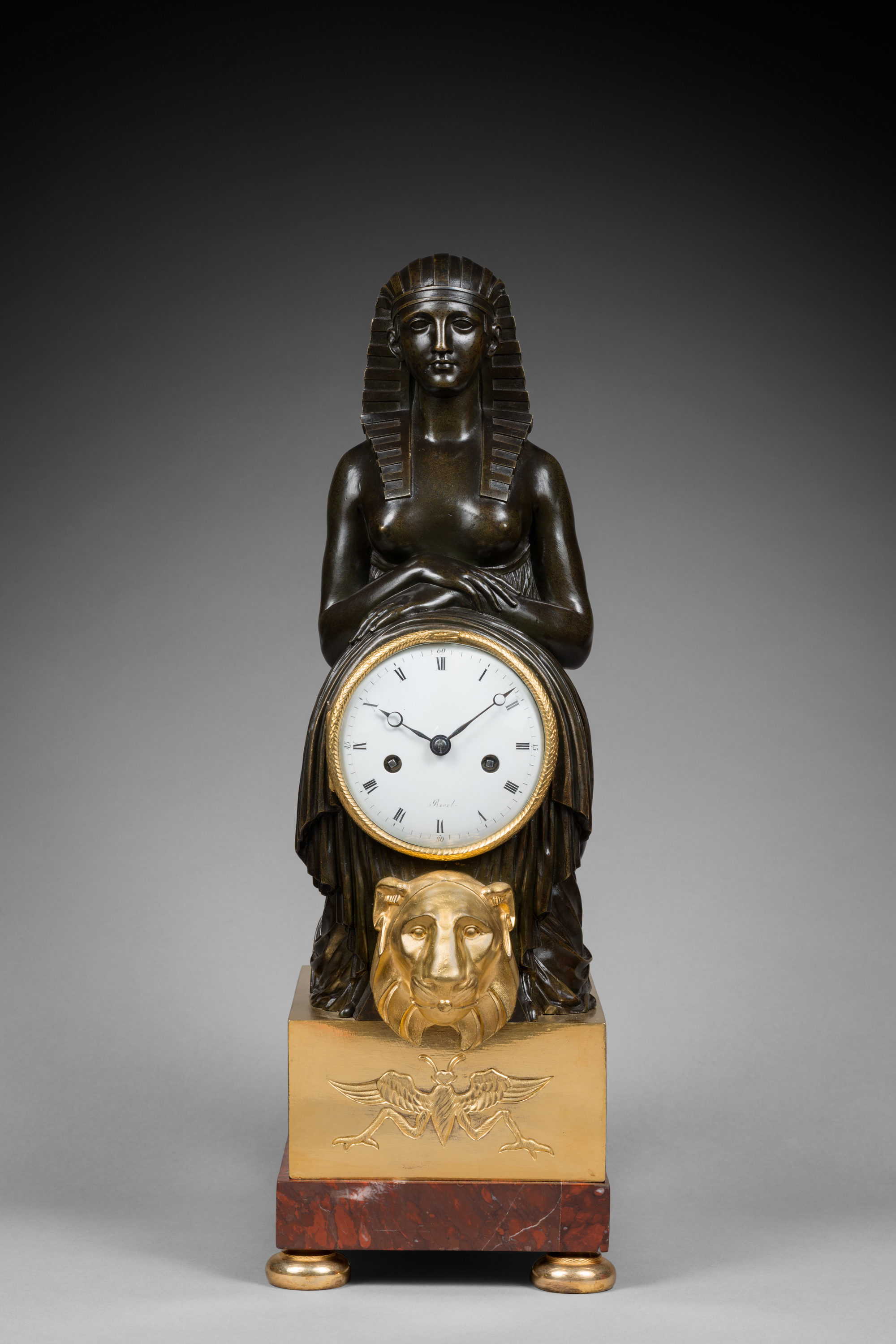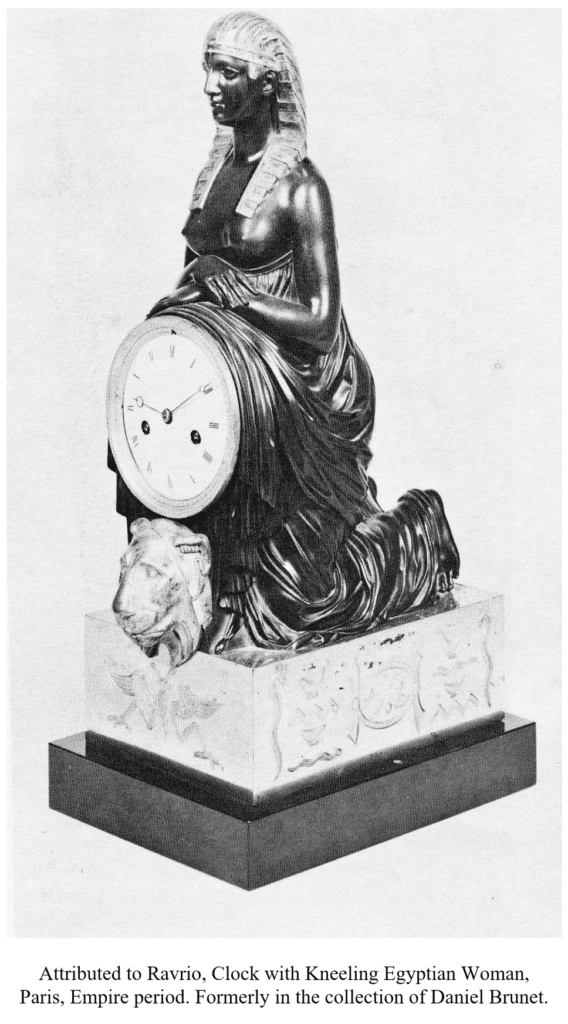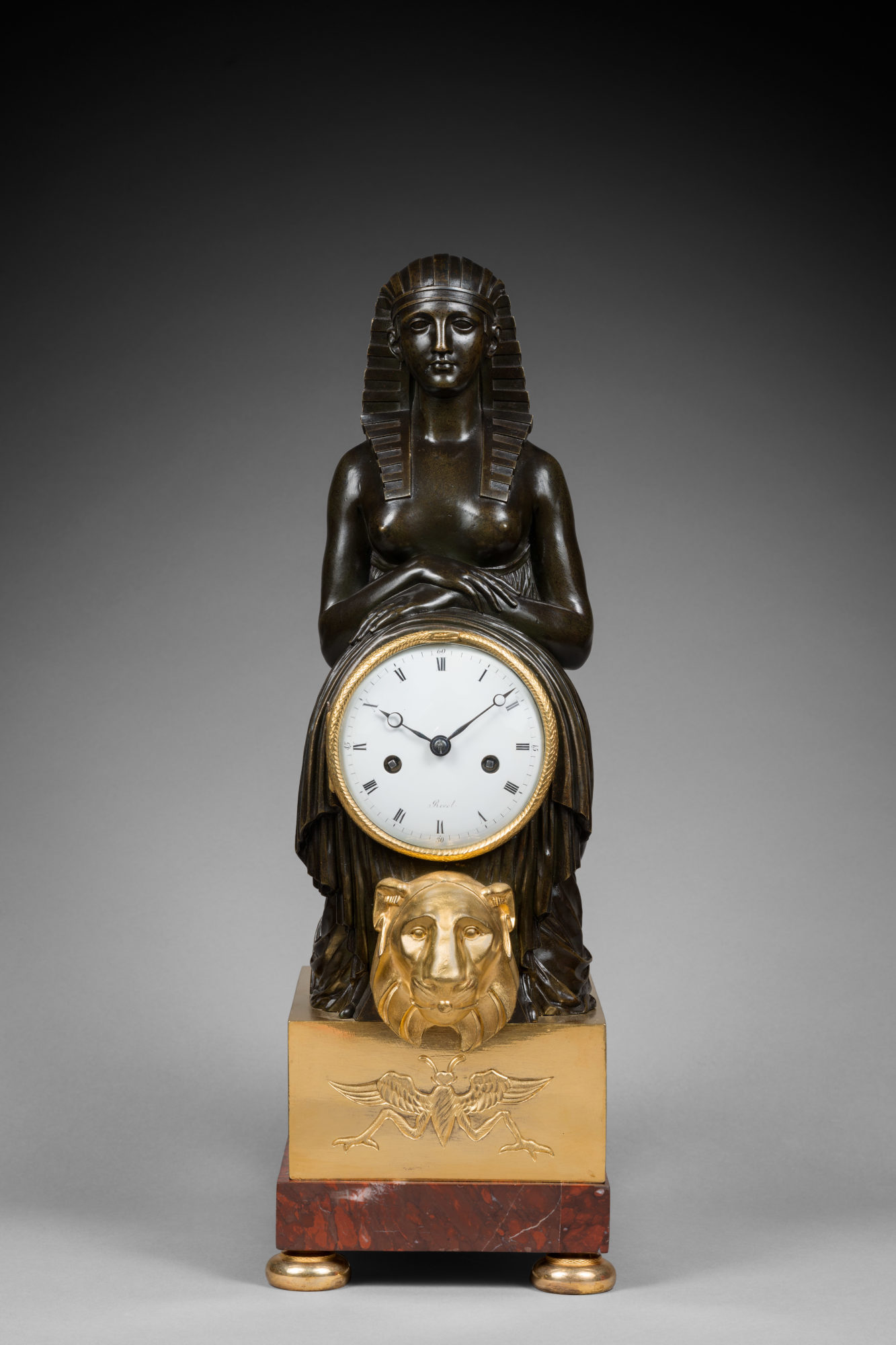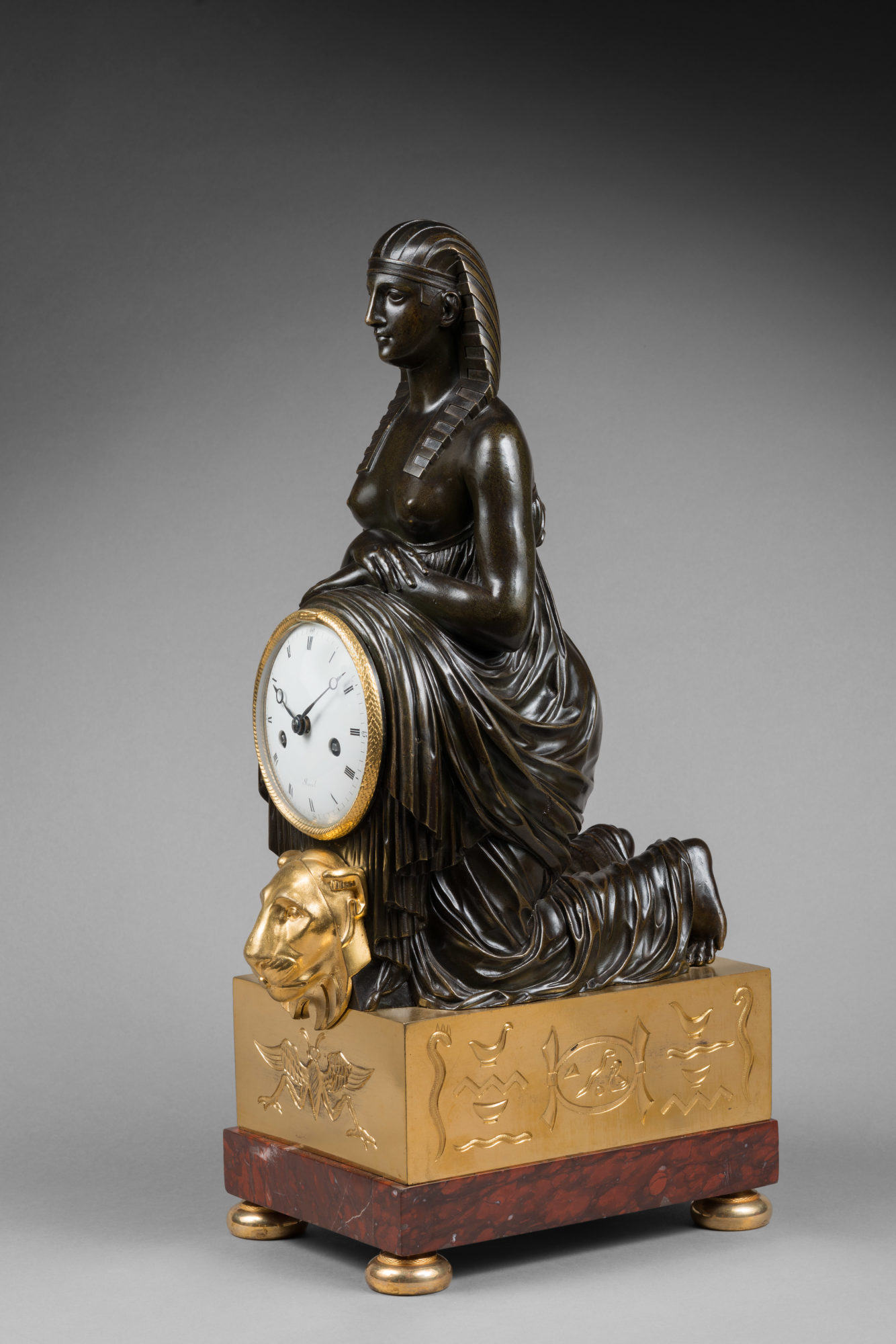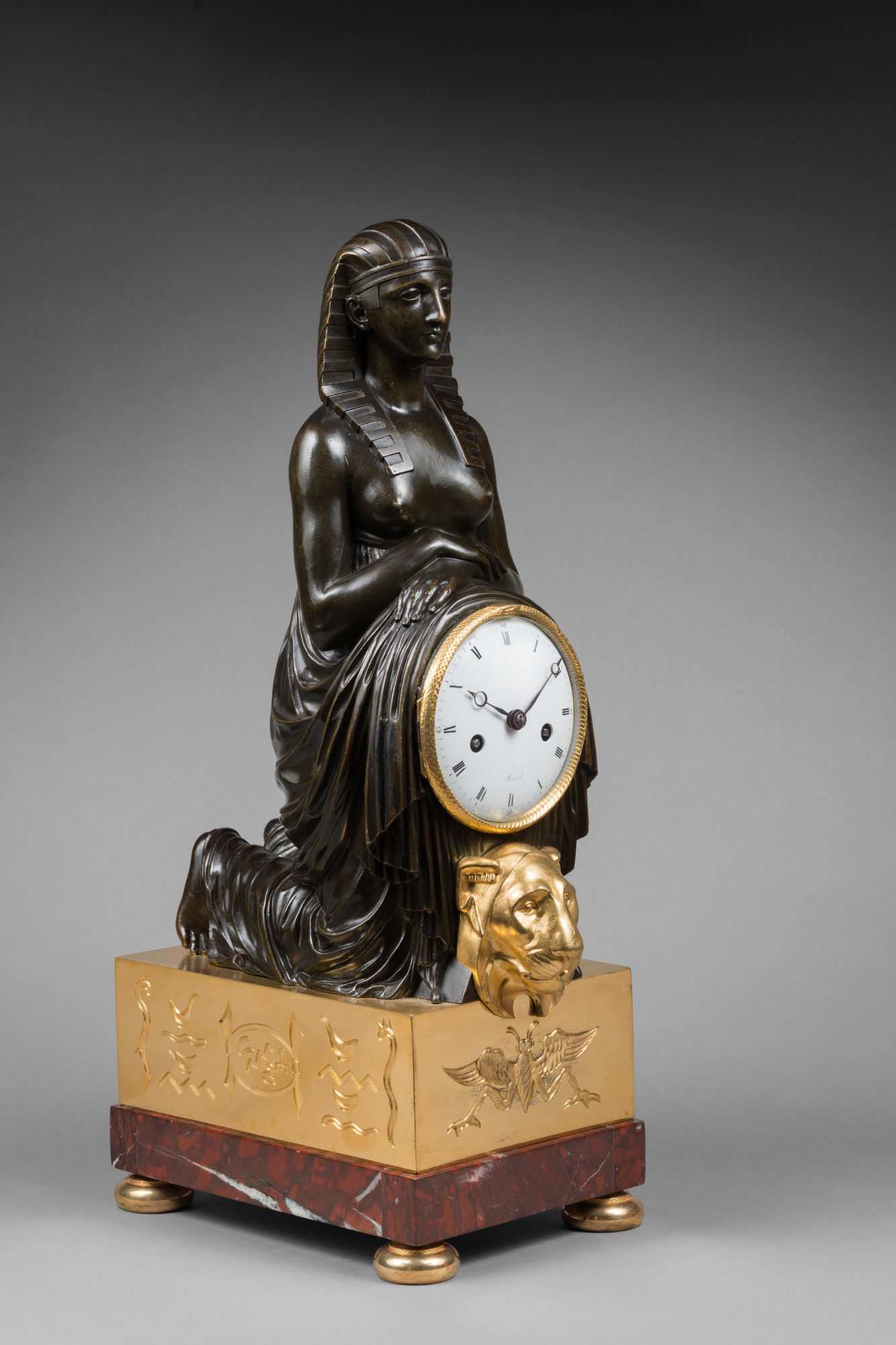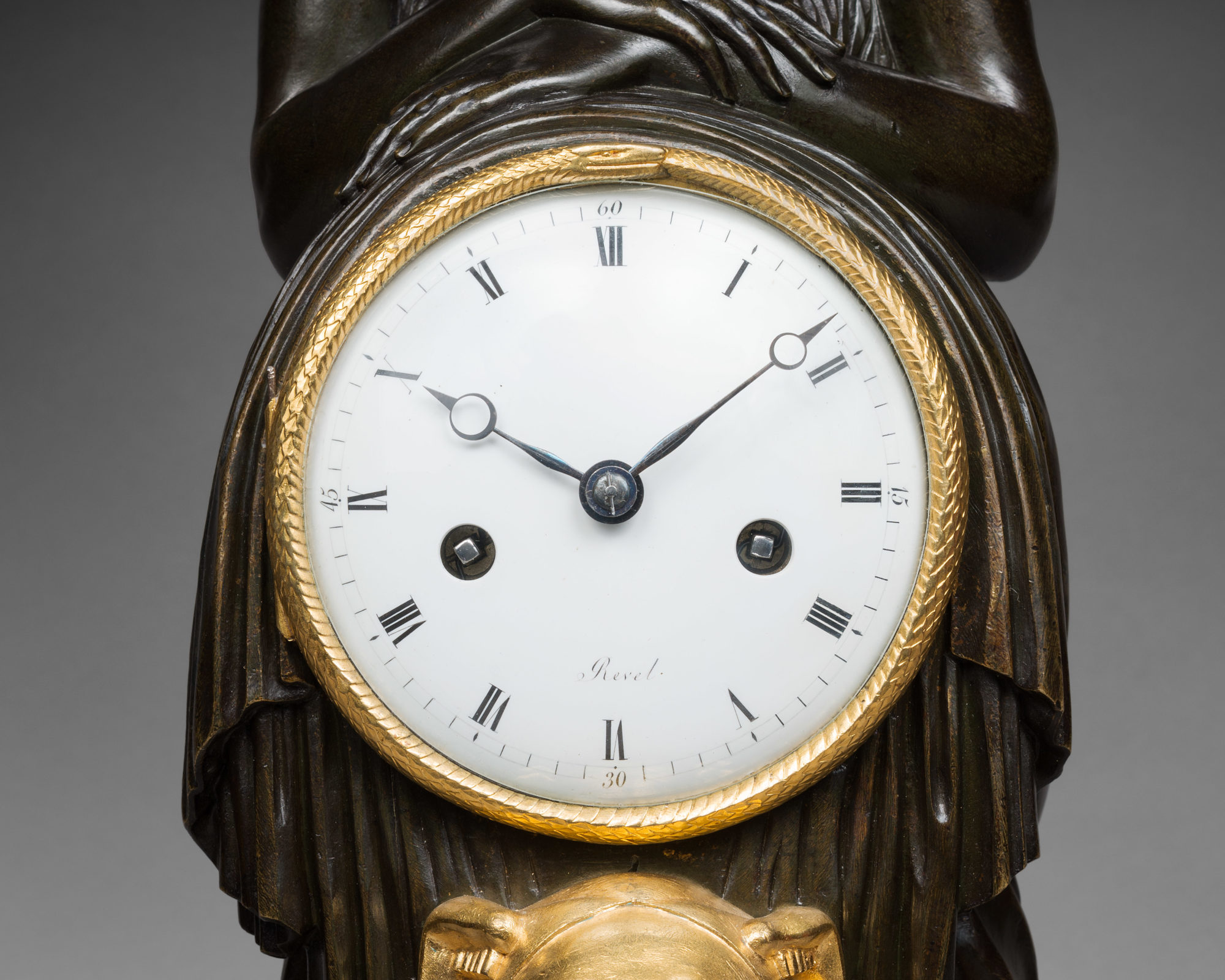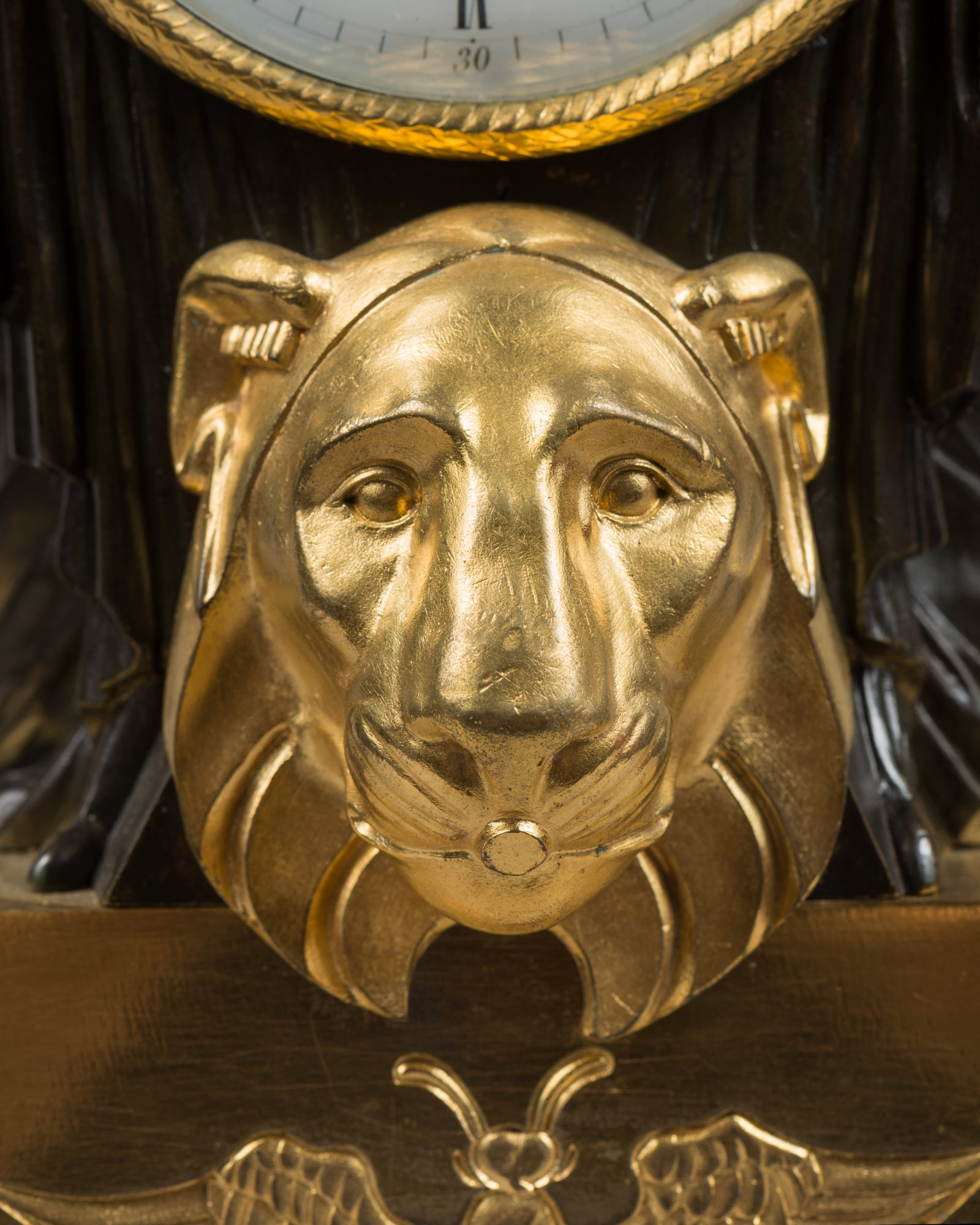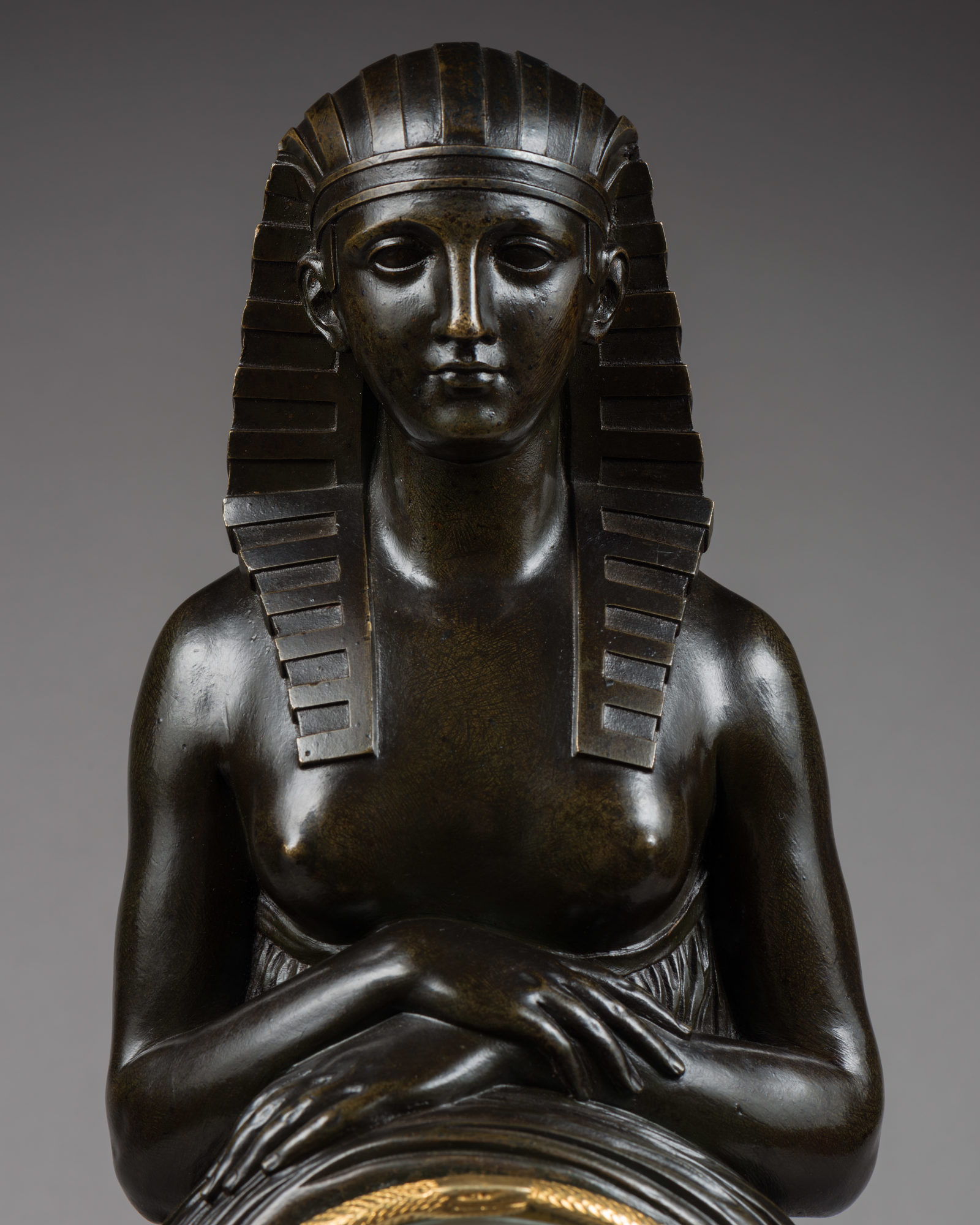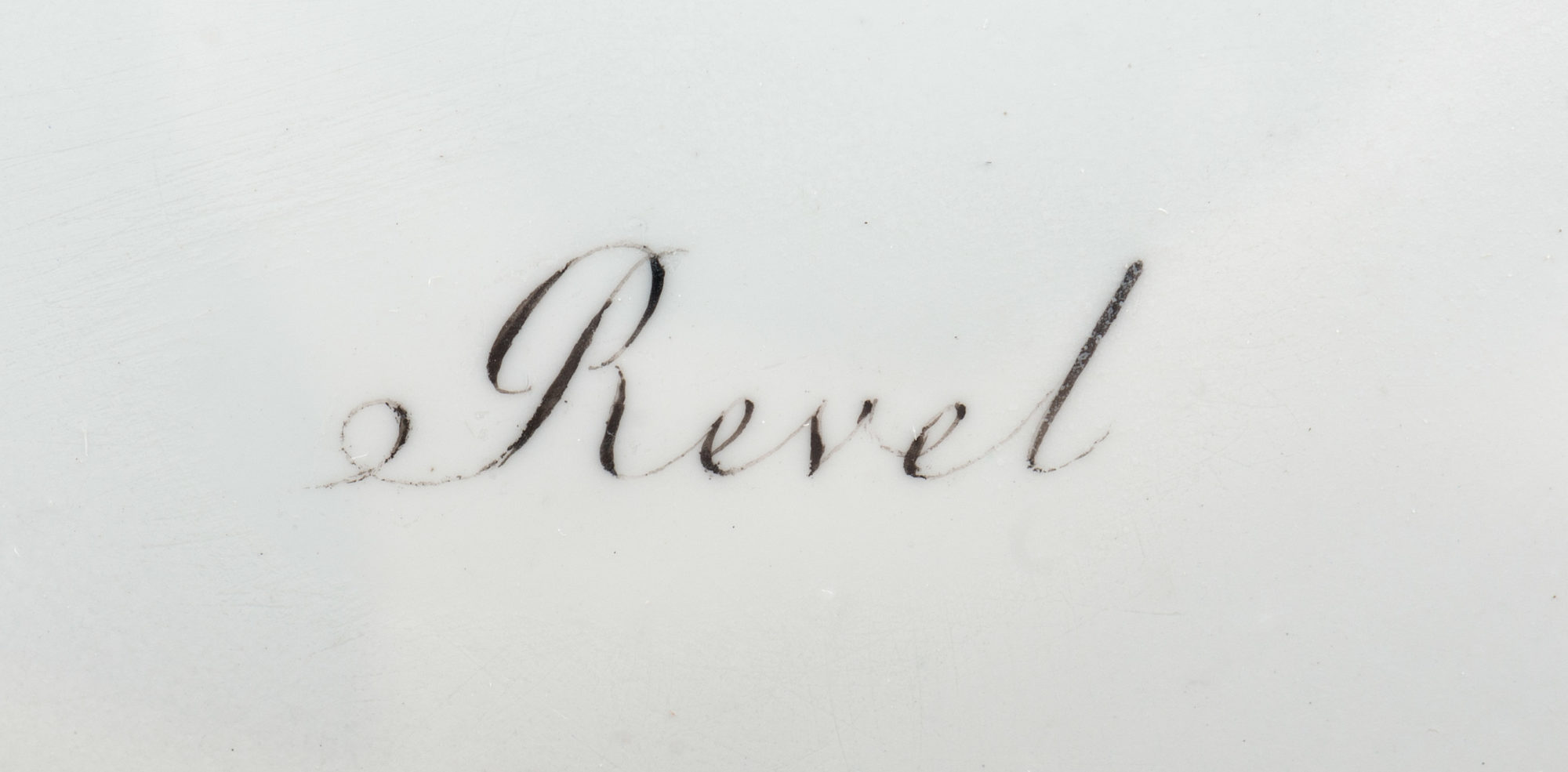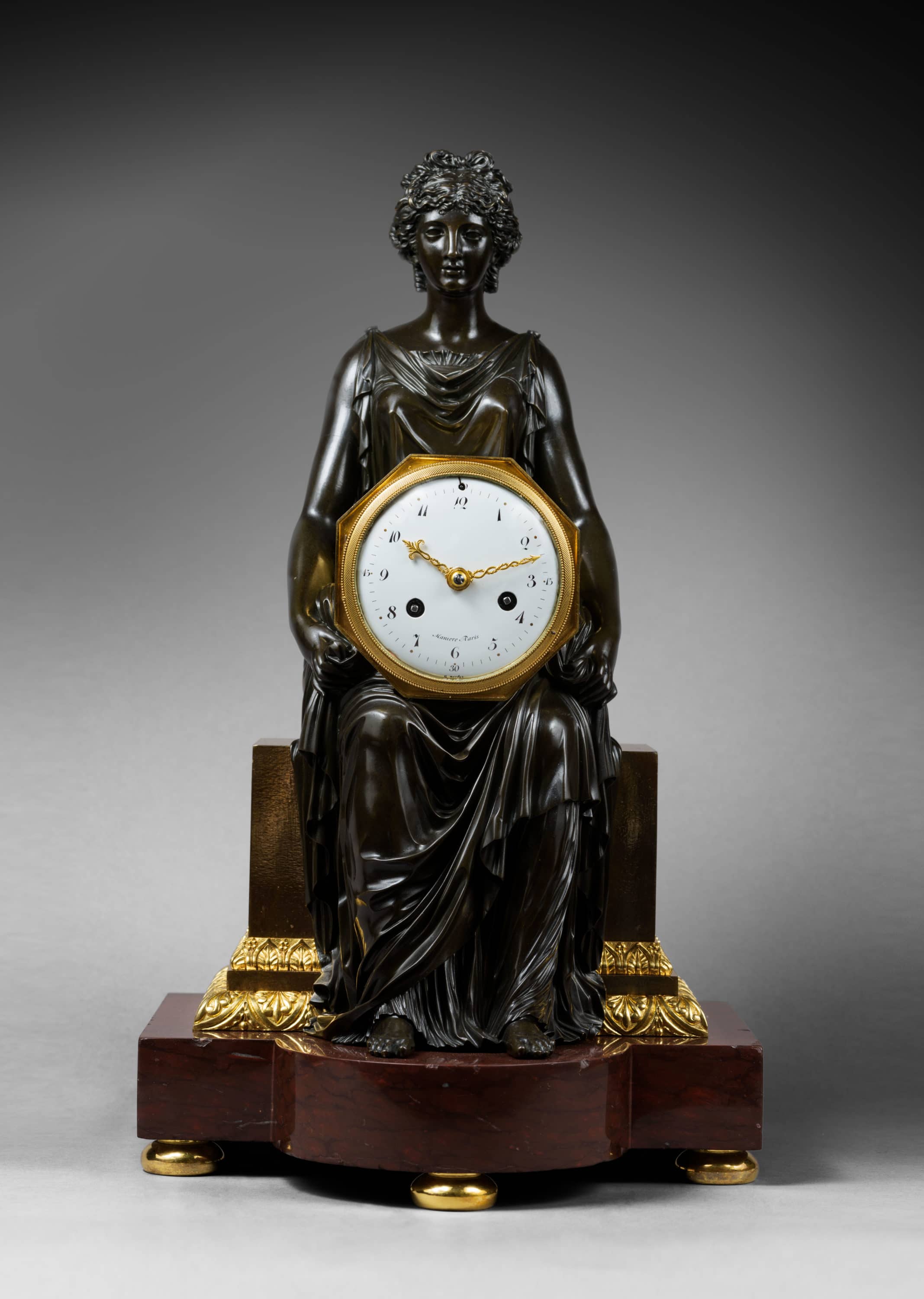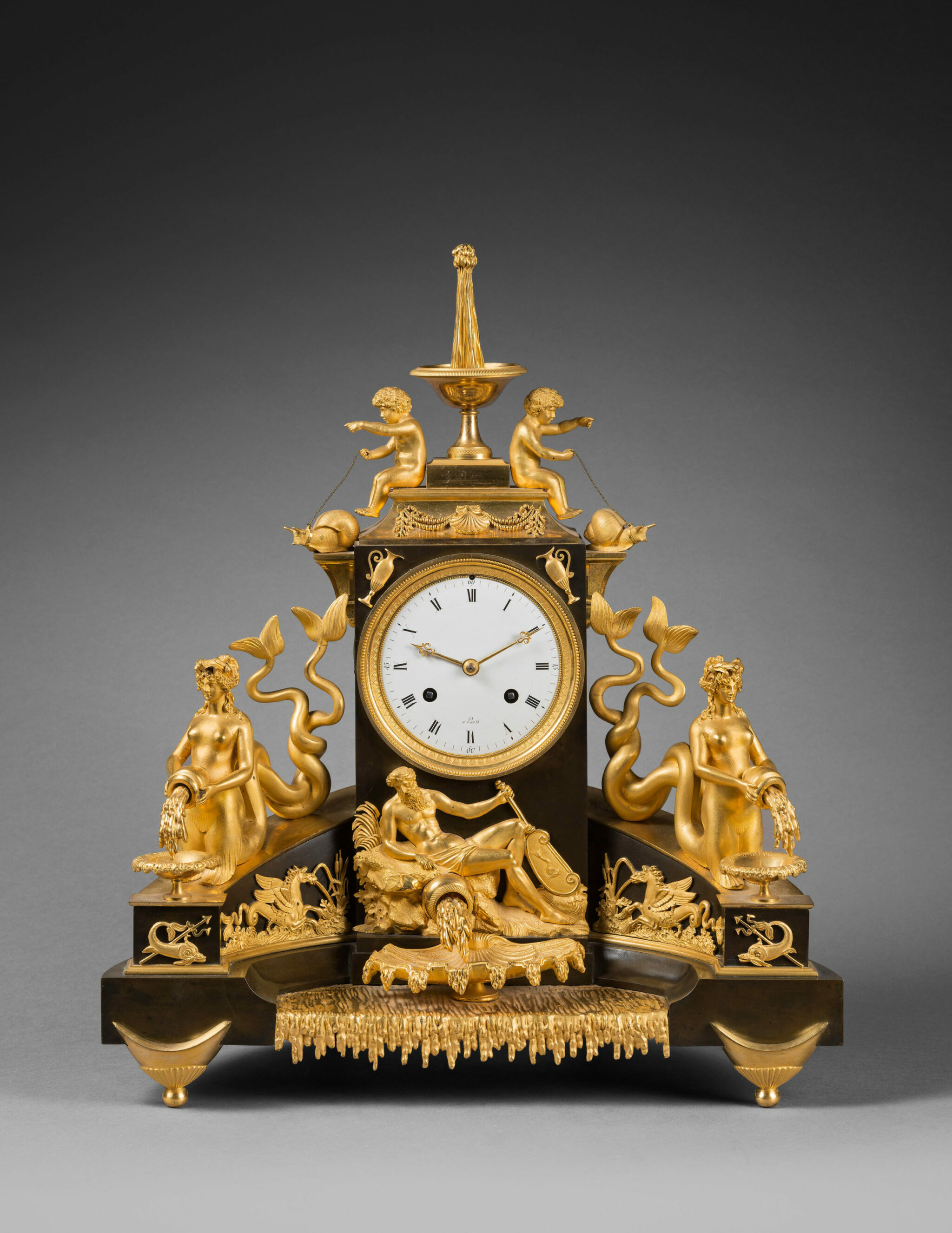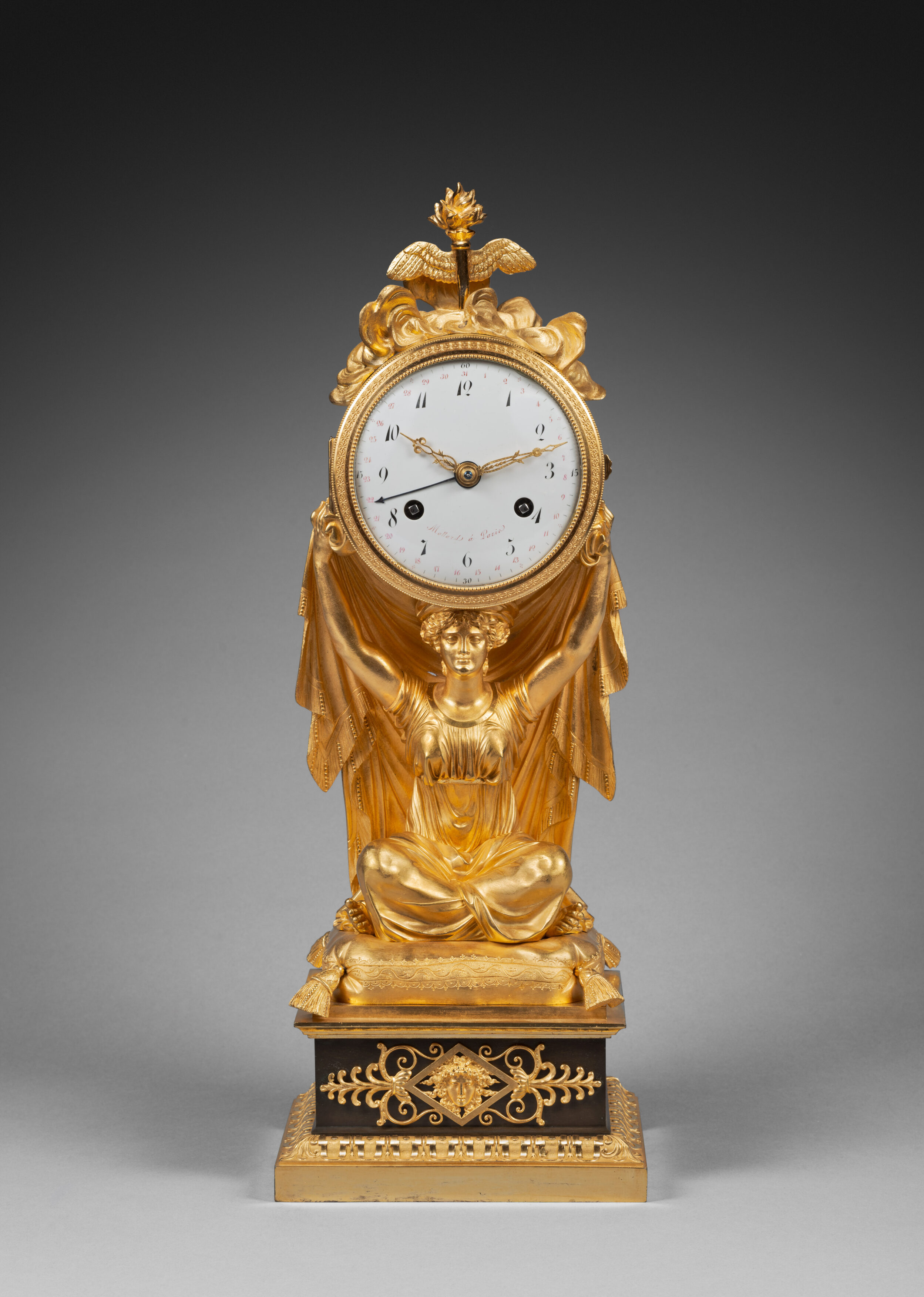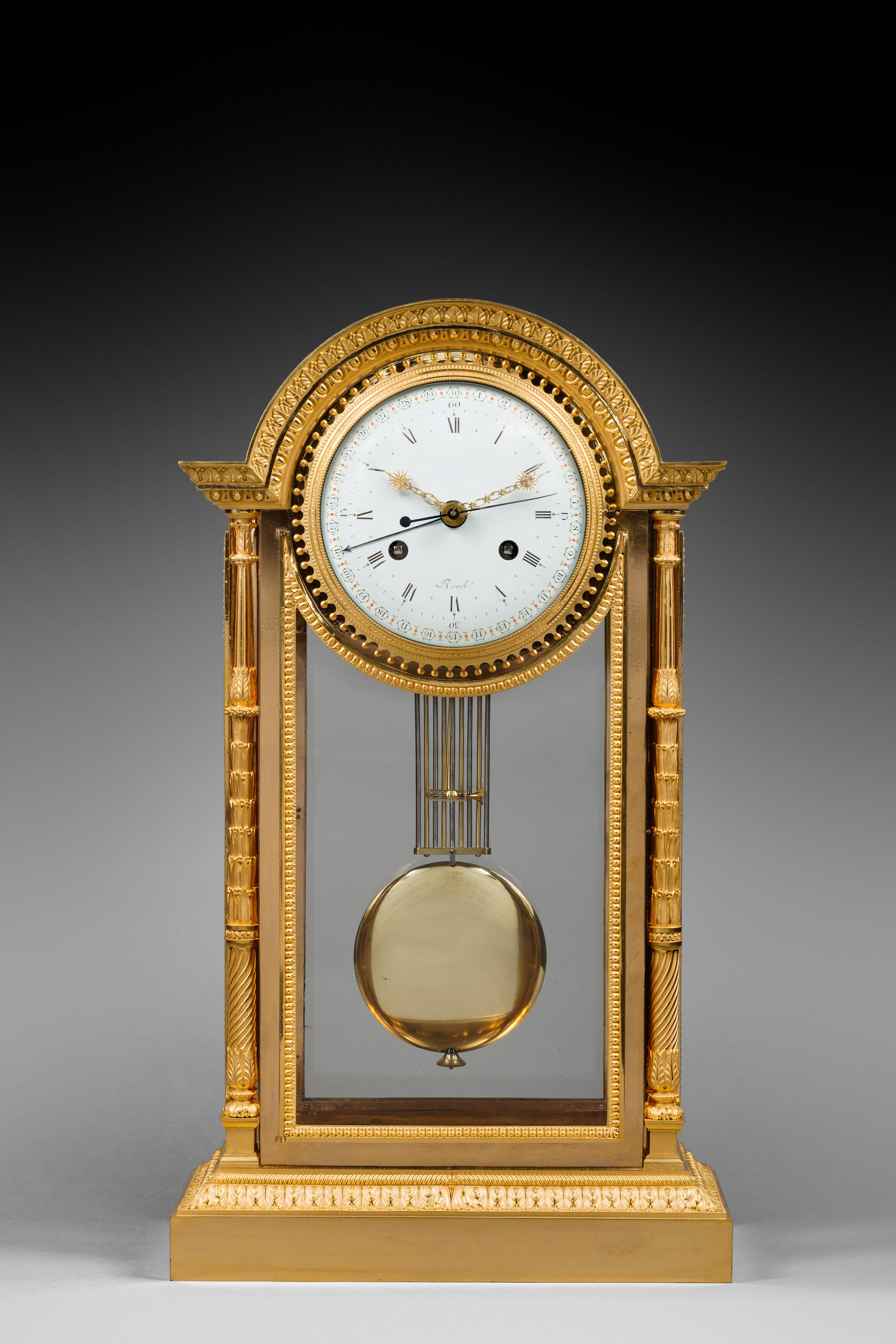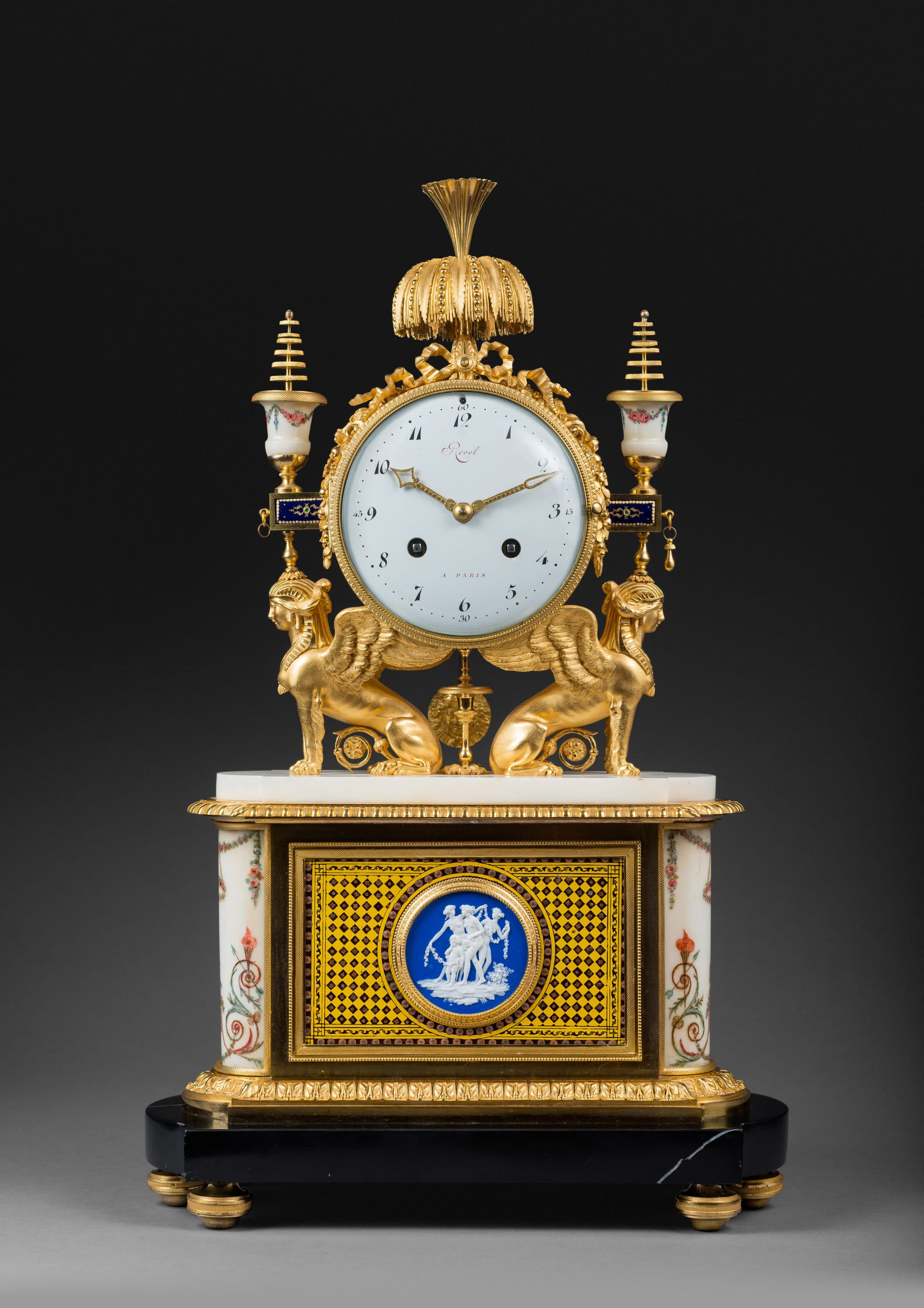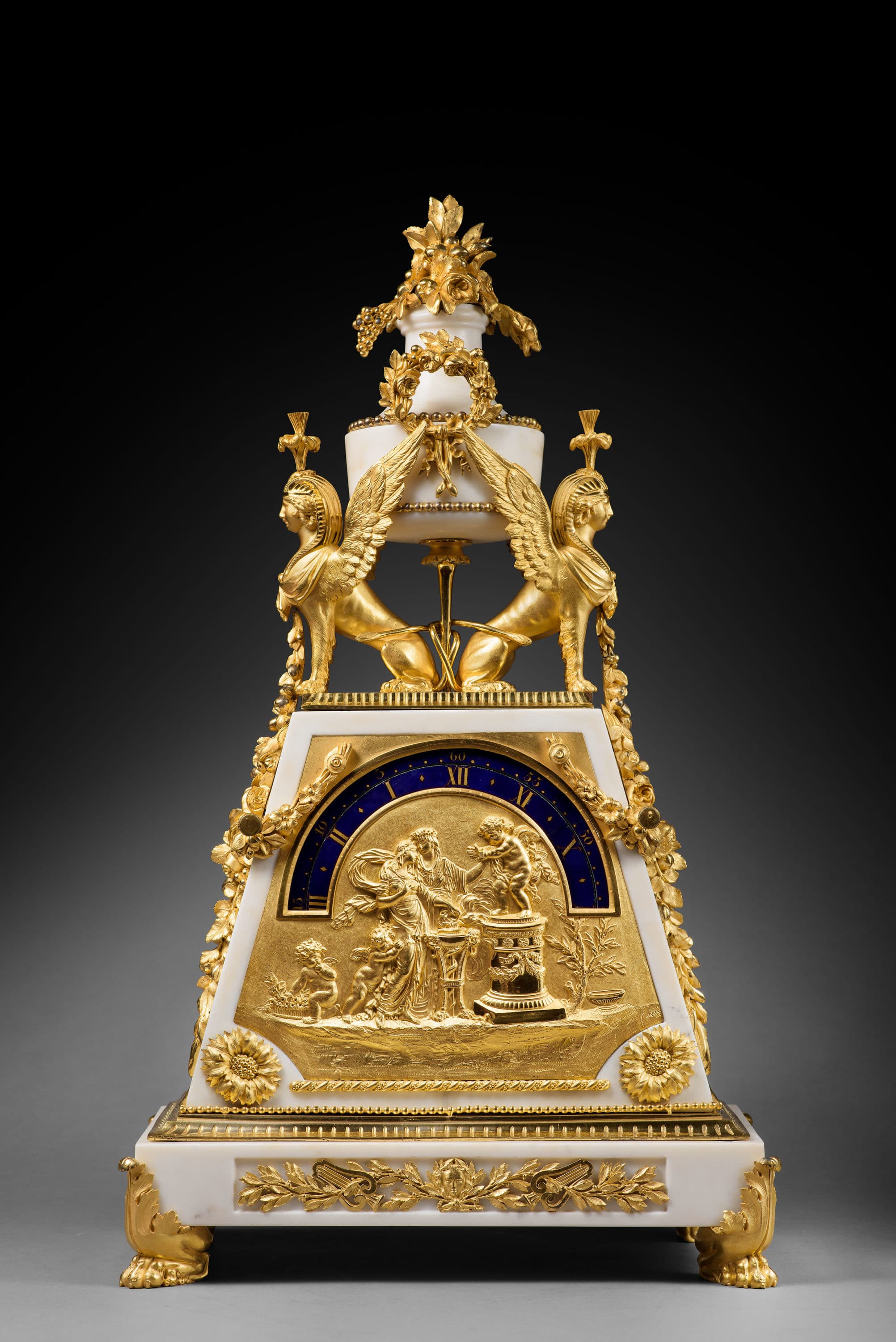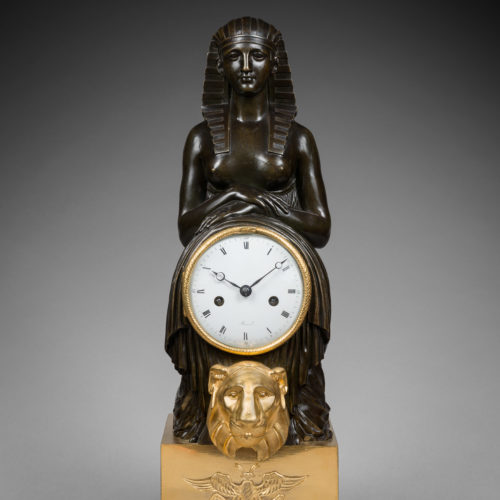Rare Gilt and Patinated Bronze Mantel Clock with the Figure of a Kneeling Egyptian
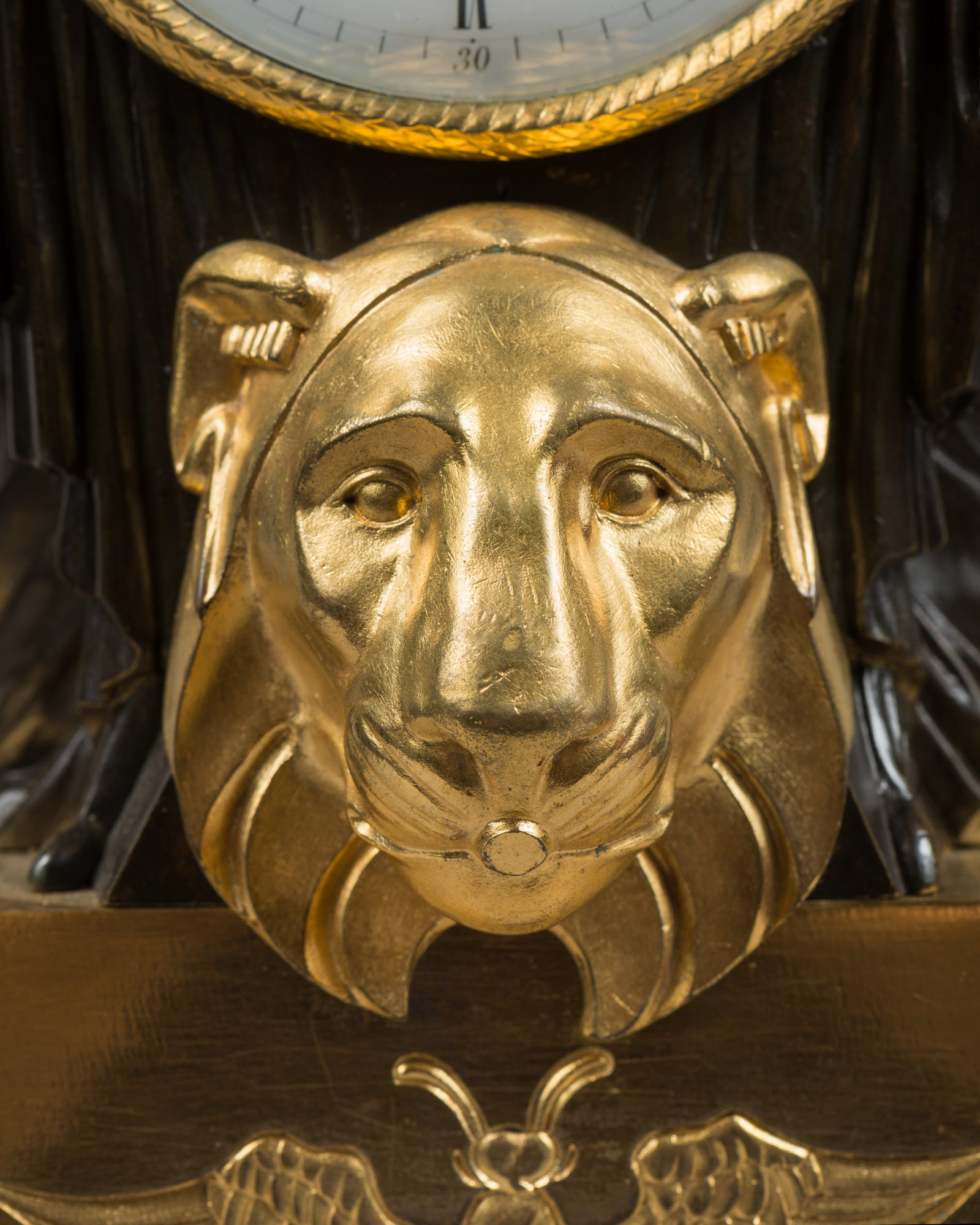
“Revel”
Case attributed to Antoine-André Ravrio
The Egyptian Figure Based on a Model by Louis-Simon Boizot
Paris, early Empire period, circa 1805
The round enamel dial, signed “Revel”, indicates the Roman numeral hours and the Arabic numeral fifteen-minute intervals, by means of two blued steel Breguet hands. It is housed in a finely chased gilt and patinated bronze case. The bezel is formed by a snake with finely chased scales. The drum case housing the movement is placed within the folds of the draped robes of a magnificent bare-breasted kneeling Egyptian woman who is wearing a nemes headdress. Beneath the dial there is a finely chased lion’s head. The base is engraved with motifs Egyptian hieroglyph motifs. The Red Griotte marble plinth is raised upon four flattened ball feet.
Discover our entire collection of antique mantel clocks for sale online or at the gallery.
La Pendulerie is the specialist in fine and rare antique clocks, based in Paris.
The unusual design of the present clock and its magnificent kneeling Egyptian figure are based on drawings by Parisian designers and architects of the late 18th century, which had been inspired by Napoleon’s Egyptian campaign (1798-1801), a military campaign that also led to the Egyptian Revival style. The fascination for Egyptian culture, history, and arts inspired many decorative objects and works of art. The well-known Recueil de décorations intérieures by Percier and Fontaine includes a sketch of an Egyptian-inspired clock; that clock is also shown in C. Huchet de Quénetain’s Les styles Consulat et Empire, Paris, p. 88, fig. 55. Similar kneeling figures were also used in bronze furnishings, including a pair of candlesticks that is illustrated in G. and R. Wannenes, Les bronzes ornementaux et les objets montés de Louis XIV à Napoléon III, Milan, 2004, p. 372. A fender that was in the Empress’s bedroom in Laeken Palace is today in the Mobilier national à Paris (see M-F. Dupuy-Baylet, L’Heure, Le Feu, La Lumière, Les bronzes du Mobilier national 1800-1870, Dijon, 2010, p. 148, catalogue n° 78).
The kneeling Egyptian woman, almost certainly based on a model by sculptor Louis-Simon Boizot (1743-1809), was used by the bronze caster Antoine-André Ravrio for particularly elaborate clocks similar to the present clock. Only a small number of identical clocks are known to exist. Among them, one gilt bronze clock whose dial is signed “Janvier”, is today in a private collection (see M. Hayard, Antide Janvier 1751-1835, Horloger des étoiles, Sa vie à travers son œuvre, 2011, p. 272). A second example, whose dial is signed “Barrand”, is illustrated in P. Kjellberg, Encyclopédie de la pendule française du Moyen Age au XXe siècle, Les éditions de l’Amateur, Paris, 1997, p. 383. One further clock was formerly in the collection of Daniel Brunet, a member of the Institute (sold in Paris, Mes Couturier-Nicolay, Palais d’Orsay, February 15, 1978, lot 28).
Joseph-Marie Revel (? - 1811)
Very little is known about this clockmaker, who was nevertheless very famous during his lifetime. Briefly mentioned in the Tardy’s Dictionnaire des horlogers under the name of Joseph Revel, he was actually named Joseph-Marie; he died in Paris in 1811. After becoming a master on August 12, 1775, he opened a workshop in the Vieille rue du Temple, and was mentioned in the Palais Royal from 1787 to 1790, in the Palais Egalité around 1800, and in the Palais Tribunat from 1804 to 1806. Several probate inventories dating from the early decades of the 19th century mention a number of his clocks; a clock by Revel was estimated in 1817 after the death of Adélaïde de Lespinasse-Langeac, the wife of the chevalier de Costalin; in 1821 another was in the collection of the Countess de Medem, Anne-Charlotte-Dorothée, the widow of the powerful Duke de Courlande.
André-Antoine Ravrio (1759 - 1814)
Received master bronzier in 1777, Antoine-André Ravrio was one of the most important Parisian bronze-casters of the late 18th century and the First Empire. Main supplier to the Imperial Garde-meuble, Ravrio worked alongside Pierre-Philippe Thomire and Claude Galle on the refurbishment of the main residences of Emperor Napoleon and Empress Josephine, as well as supplying numerous bronze furnishings for the influential figures of the time, including a number of the Empire’s Marshals. Today, some of his work can be found in the collections of the Mobilier National in Paris, as well as in major international public and private collections.
